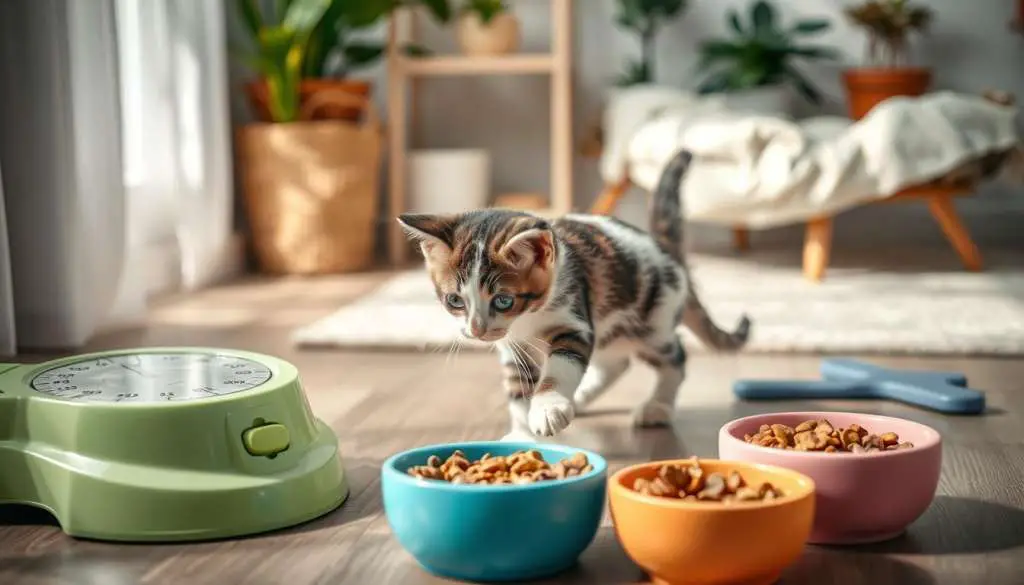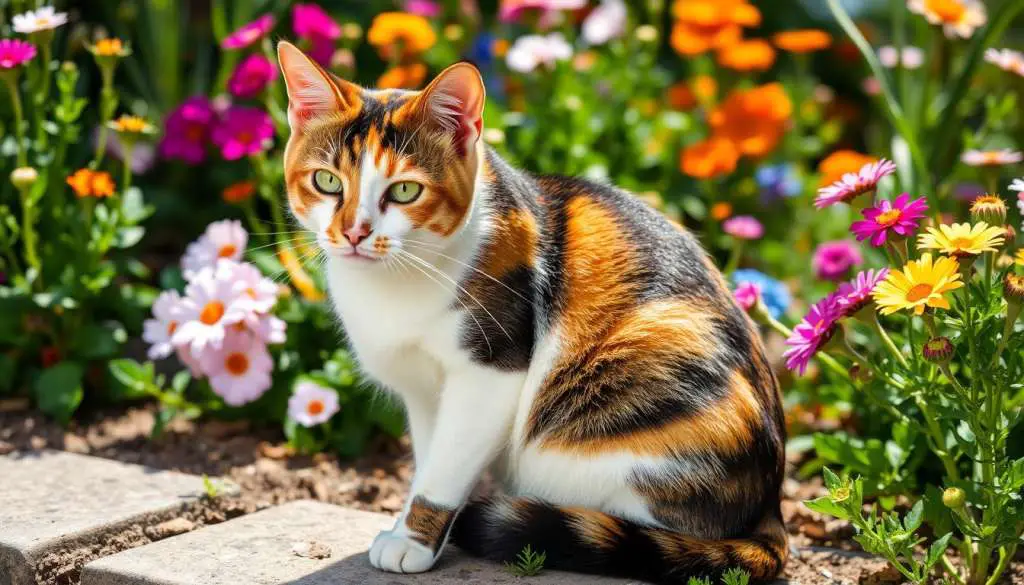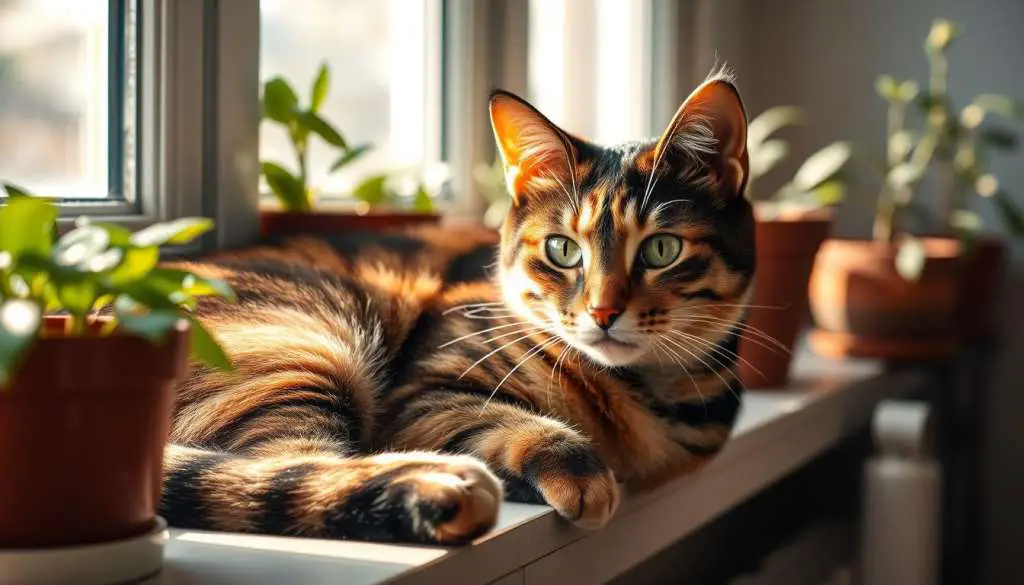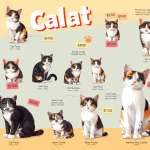Have you ever looked into a tortoiseshell calico cat’s eyes and felt a deep connection? These amazing cats are more than pets. They are living art that touches hearts with their beautiful coat patterns and lively personalities.
Every tortoiseshell calico cat has its own story in its colors. They have chocolate, orange, and other colors mixed in a unique way. This makes them special friends that bring joy and curiosity to everyone.
Get ready to explore the magical world of these amazing cats. Whether you love cats or just want to learn about them, this guide will show you the magic of tortoiseshell calico cats. You’ll discover their charm and character.
Key Takeaways
- Tortoiseshell calico cats are known for their distinctive tri-color coat patterns
- These cats possess unique genetic traits that create their stunning appearance
- Each tortoiseshell calico has a one-of-a-kind color combination
- Their rare coloration makes them highly sought-after companions
- Understanding their genetics reveals fascinating feline diversity
Understanding the Tortoiseshell Calico Cat Phenomenon
Explore the amazing world of tortoiseshell calico. Their coats are stunning, thanks to genetics. Each cat is a unique work of art, showing off vibrant colors.
The Genetics Behind Their Unique Coat
The beauty of tortoiseshell calico comes from their genes. Female cats have two X chromosomes, which allow for their colorful coats. This magic happens through X-chromosome inactivation, making their coats multi-colored.
- Only female cats can be true tortoiseshell calico
- Coat colors result from random X-chromosome gene expression
- Each patch represents a different genetic expression
How Tortoiseshell Differs from Traditional Calico
Calico tabbies have white, black, and orange patches. But tortoiseshell cats have a blended look. Their colors mix smoothly, like a painting.
Common Color Combinations
Calico tabbies come in many colors. You might see:
- Black and orange swirls
- Cream and chocolate blends
- Rich mahogany and golden hues
“Each tortoiseshell calico cat is a living work of art, with no two coats exactly alike.” – Feline Genetics Research Institute
Physical Characteristics of Tri-Color Felines
When you see a tri-color feline for the first time, you’ll be amazed by their beauty. These cats are like living works of art, with coat patterns that grab your attention. They often have a mix of black, white, and orange or cream colors in unique patterns.
These cats have some common traits. They are usually medium-sized, muscular, and well-proportioned. They weigh between 7-12 pounds and have a soft, dense coat with special color patterns.
Their coat patterns make each cat truly unique. The colors can show up in different ways, like large patches or mixed strands. This creates a stunning visual effect that makes each cat special.
| Pattern Type | Color Distribution | Typical Appearance |
|---|---|---|
| Patched | Large color blocks | Distinct color sections |
| Brindled | Mixed color strands | Swirled, blended colors |
| Spotted | Small color fragments | Scattered color patches |
Each tri-color feline is a unique genetic canvas, with no two cats sporting exactly the same coat pattern. Their amazing looks show off the complex genetics behind their beauty. It’s not just about looks; it’s a display of nature’s artistry.
“Nature’s paintbrush works most beautifully in the world of feline genetics” – Feline Genetics Research Institute
The Fascinating History of Calico Tabbies
Calico tabbies and tortoiseshell calico have amazed people for centuries. Their unique coats have sparked curiosity and admiration worldwide. Their history is filled with fascinating stories that go beyond just being pets.
Cultural Significance Around the World
Different cultures see calico tabbies in special ways. In Japan, they’re seen as lucky charms. Maneki-neko, the famous beckoning cat, often shows tortoiseshell calico colors, symbolizing good luck.
- Japan: View calico cats as magical creatures bringing prosperity
- United States: Admire them for their unique and striking appearance
- Celtic regions: Link them to mystical properties
Historical References and Folklore
“A calico tabby is not just a cat, but a walking piece of art.” – Unknown Feline Enthuasiast
Sailors used to think tortoiseshell calico brought luck on sea voyages. Legends said these cats could calm storms and protect ships from dangers at sea.
Evolution of Breed Recognition
The recognition of calico tabbies has changed a lot. They’re not a breed, but their unique genetics have caught the attention of cat lovers and scientists.
| Era | Recognition Status | Significance |
|---|---|---|
| Pre-1900s | Minimal | Seen as unusual coat variation |
| Early 1900s | Growing Interest | Scientific curiosity increased |
| Modern Era | Celebrated | Recognized for unique genetic traits |
Today, calico tabbies amaze cat lovers with their amazing coat patterns and rich cultural background.
Brindled Cat Patterns and Variations
Exploring the world of brindled cat patterns shows the amazing complexity of tri-color felines. Your brindled cat’s coat is a unique canvas of color and texture. It makes it stand out from other cats.
The brindled pattern mixes colors in a mottled or streaked way. Tri-color felines have a magical mix of colors that make them look amazing. Each brindled cat is uniquely beautiful because of these varied patterns.
- Marbled brindling with soft color transitions
- Sharp-edged color patches
- Subtle color blending
- Distinctive tri-color combinations
Genetics are key in creating these stunning coat patterns. The mix of colors comes from complex genetics. This makes each brindled cat look different.
| Pattern Type | Color Characteristic | Genetic Influence |
|---|---|---|
| Classic Brindled | Soft color blending | X-chromosome linked |
| Sharp Brindled | Distinct color blocks | Specific gene mutation |
| Dilute Brindled | Soft pastel colors | Recessive color genes |
“Each brindled cat is a living work of art, with a coat that tells a unique genetic story.” – Feline Genetics Research Institute
Knowing about these variations helps you see how special your tri-color feline’s coat is. Every brindled cat has a special mix of genes. This creates a unique visual masterpiece.
Temperament and Personality Traits
Tortoiseshell calico cats are famous for their special personalities. They charm cat lovers everywhere. These piebald kitties add a unique charm and spirit to any home, making them amazing friends.
The Famous “Tortitude”
The term “tortitude” captures the spirited nature of tortoiseshell calico. These cats are known for their:
- Strong-willed nature
- Confident demeanor
- Dramatic emotional expressions
- Intense loyalty to their owners
“Every tortoiseshell calico has a personality as unique as its coat pattern.” – Feline Behavior Experts
Social Behavior Patterns
Your tortoiseshell calico shows complex social traits. They are:
- Highly interactive with family members
- Selectively affectionate
- Intelligent and quick to learn
- Capable of forming deep bonds
Interaction with Other Pets
Introducing a piebald kitty to other pets needs patience. These cats can be territorial but usually adapt well with proper socialization. They value their space but also enjoy being with others.
Understanding your tortoiseshell calico cat’s unique personality will help you build a strong, loving relationship that celebrates their extraordinary spirit.
Health Considerations for Piebald Kitties

Caring for a piebald kitty means knowing their special health needs. These cats, like tortoiseshell calicos, have genetic traits that affect their health.
Genetics are key to their health. Important health points include:
- Higher risk of certain genetic conditions
- Potential hormone-related health challenges
- Specific screening recommendations
Vets say it’s vital to watch their health closely. Early detection can make a big difference in managing health issues.
“Prevention is always better than cure when it comes to your particolored pet’s health.” – Feline Health Experts
Key health screenings for your kitty include:
| Health Screening | Recommended Frequency | Purpose |
|---|---|---|
| Annual Physical Exam | Once per year | Comprehensive health assessment |
| Genetic Testing | Once in lifetime | Identify possible inherited conditions |
| Hormone Level Check | Every 2 years | Watch for hormonal imbalances |
Your piebald kitty’s coat is not just beautiful. It also hints at their health risks. Regular vet visits and care keep them healthy and joyful.
Care Tips for Your Particolored Pet
Caring for a tortoiseshell calico cat is special. They are not just beautiful but also need detailed care. Knowing their needs will keep your cat healthy and happy.
Grooming Essentials
Your cat’s stunning coat needs regular care. Brush them 2-3 times a week with a soft-bristled brush. This prevents matting and hairballs. Their tri-color fur might get tangled easily.
- Use a metal comb for detangling
- Check for skin irritations during grooming
- Trim nails every 2-4 weeks
Nutritional Requirements
Good nutrition is key for your cat’s health. Choose high-quality cat food that fits their age and activity level.
| Age Group | Daily Calories | Protein Percentage |
|---|---|---|
| Kitten | 250-500 | 35-40% |
| Adult | 200-400 | 30-35% |
| Senior | 150-250 | 25-30% |
Exercise and Mental Stimulation
Keep your cat active with toys and play. This prevents boredom and supports their natural instincts.
“A stimulated cat is a happy cat!” – Veterinary Experts
- Provide climbing trees
- Use puzzle feeders
- Rotate toys weekly
- Schedule 15-20 minute play sessions
Remember, each tortoiseshell calico cat is unique. Observe your pet’s individual preferences and adjust care routines.
Van Cat Characteristics in Tortoiseshell Calicos
The van cat pattern is a unique variation in tri-color felines. It captures the hearts of many cat lovers. Your van cat might have a special coat pattern that makes them stand out from other tortoiseshell cats.

A van cat has a special color arrangement. Most of their body is white, with colored patches on their head and tail. This pattern comes from Turkey’s Van region, adding a rich history to your cat.
- White base coat covering 80-90% of the body
- Colored patches mainly on head and tail
- Unique genetic markers defining the van pattern
Understanding van cat patterns is complex. Your tri-color feline might show many interesting traits:
| Characteristic | Description |
|---|---|
| Color Distribution | Predominantly white with colored “points” |
| Genetic Rarity | Occurs in less than 10% of tortoiseshell cats |
| Coat Pattern | Symmetrical colored markings |
“The van cat pattern is nature’s artistic brushstroke on feline fur.” – Feline Genetics Research Institute
To spot a van cat in your tortoiseshell calico, look for a white coat with strategic color spots. These cats are a genetic wonder that amazes cat lovers everywhere.
Conclusion
Your journey into the world of tortoiseshell calico cats shows they are more than just pets. These cats have a unique mix of genetics and personality. Their coat patterns tell a story of genetic complexity, fascinating both cat lovers and scientists.
Understanding these cats means appreciating their rare genetic makeup. Most are female, adding to their mystique. Their beauty is just the start – their temperament, health, and care needs are also important.
If you’re thinking about getting a tri-color cat or just love them, remember each one is special. They offer deep companionship, playfulness, and charm. With the right care, you can form a strong bond with these amazing cats.
Learning about tortoiseshell calico cats opens a door to a world of genetic wonder. These cats are more than pets – they are living art, genetic miracles, and lifelong friends waiting to bring joy and excitement to your life.







